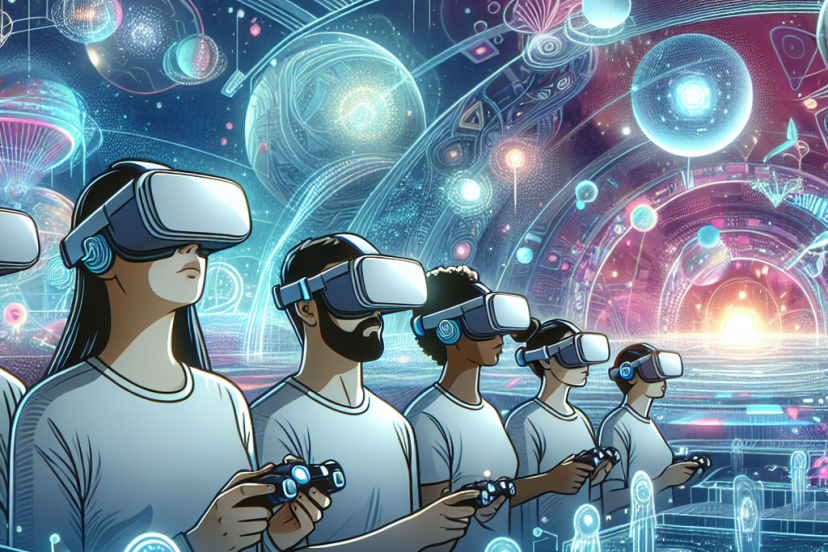Cherished Classics: Retro Games You Can’t Miss
Cherished Classics: Retro Games You Can’t Miss
1. The Legend of Zelda (1986)
Released in 1986 for the Nintendo Entertainment System (NES), The Legend of Zelda introduced players to the magical land of Hyrule. As Link, players embark on a quest to rescue Princess Zelda and defeat the evil Ganon. This action-adventure game was revolutionary, blending exploration, puzzle-solving, and combat into a cohesive experience. Its open-world design was a pioneering concept that inspired countless games to follow. The intricate dungeons, memorable music composed by Koji Kondo, and iconic items like the Master Sword have made this game a timeless classic.
2. Super Mario Bros. (1985)
Super Mario Bros. redefined platform gaming when it was released on the NES in 1985. Players control Mario as he navigates the Mushroom Kingdom, striving to rescue Princess Peach from Bowser. With its simple yet addictive gameplay, players jump between platforms, collect coins, and dodge enemies. The innovative level design, including power-ups like the Super Mushroom and Fire Flower, established the template for future platformers. The game not only revitalized a struggling gaming industry but also solidified Nintendo as a major player.
3. Tetris (1984)
Developed by Russian software engineer Alexey Pajitnov, Tetris was first launched in 1984. This straightforward puzzle game involves rotating and arranging falling tetrominoes to clear lines. Its ease of play belies a depth of strategy that keeps players invested. The game has become a cultural phenomenon, leading to numerous adaptations across various platforms, including handheld devices and smartphones. Tetris’s simple mechanics and addictive gameplay make it a cornerstone of gaming history, still captivating audiences today.
4. Pac-Man (1980)
Pac-Man, developed by Namco, was released in 1980 and quickly became an arcade sensation in the United States. Players guide Pac-Man through a maze, eating pellets while avoiding colorful ghosts. The game’s unique maze-chase format, combined with its whimsical character design, made it appealing to a broad audience, including female gamers. Pac-Man not only dominated the arcade era but also spawned a franchise that includes sequels, merchandise, and even a cartoon series, creating a lasting legacy in popular culture.
5. Sonic the Hedgehog (1991)
Sega introduced its blue speedster, Sonic, in 1991, with the release of Sonic the Hedgehog for the Sega Genesis. The game stands out with its speedy gameplay and vibrant visuals. Sonic’s quest to thwart Dr. Robotnik’s plans showcases creative level design characterized by loops, ramps, and hidden areas. Players collect rings and power-ups, while the iconic soundtrack by Masato Nakamura enhances the experience. Sonic became a mascot for Sega, establishing a major rivalry with Nintendo’s Mario and leaving an indelible mark on the gaming landscape.
6. Street Fighter II (1991)
Street Fighter II, released by Capcom in 1991, revolutionized the fighting game genre. Its introduction of a cast of unique characters, each with their own fighting styles and special moves, set a new standard for gameplay complexity. Players could now select their preferred character to engage in one-on-one battles, adding layers of strategy and excitement. The game’s competitive elements invigorated arcades worldwide and spawned a franchise with sequels, adaptations, and an esports scene that remains vibrant today.
7. Donkey Kong (1981)
Donkey Kong marked the debut of Mario, originally known as Jumpman, when it was launched by Nintendo in 1981. Players navigate platforms to rescue a damsel in distress from a giant ape. The game is lauded for its innovative gameplay mechanics and the introduction of narrative elements to arcade gaming. Its rise in popularity led to the creation of an enduring franchise, while Donkey Kong himself became an iconic character in the gaming world. The game’s straightforward design combined with its escalating difficulty ensures it remains a beloved classic.
8. The Secret of Monkey Island (1990)
Released by Lucasfilm Games (now LucasArts) in 1990, The Secret of Monkey Island is a point-and-click adventure game that combines humor with clever puzzle-solving. Players take on the role of Guybrush Threepwood, aspiring to become a pirate while navigating through a whimsical Caribbean setting. The engaging story and memorable dialogue, penned by Ron Gilbert and Tim Schafer, offer a compelling narrative experience. Its influence is evident in the revival of adventure games and the enduring popularity of narrative-driven gameplay.
9. Final Fantasy VII (1997)
Final Fantasy VII, released by Square (now Square Enix) in 1997 for the PlayStation, redefined role-playing games (RPGs) with its cinematic storytelling and innovative gameplay. Players follow Cloud Strife, who joins a group of rebels in their fight against the evil Shinra Corporation. This groundbreaking title featured an expansive world, intricate character development, and memorable music composed by Nobuo Uematsu. The game’s success marked a turning point for RPGs, bringing the genre mainstream popularity. Its recent remake showcases the enduring legacy of this iconic title.
10. Castlevania: Symphony of the Night (1997)
Castlevania: Symphony of the Night, released in 1997 for PlayStation, elevated the Castlevania franchise through a blend of platforming, exploration, and RPG mechanics. The game follows Alucard, Dracula’s son, as he investigates Dracula’s castle. Its non-linear gameplay offers players the freedom to explore and upgrade their abilities. The charming pixel art, atmospheric music, and intricate lore contributed to its critical acclaim. This title set the standard for “Metroidvania” games, inspiring numerous titles that followed, merging exploration and combat within expansive worlds.
11. The Elder Scrolls III: Morrowind (2002)
In 2002, Bethesda Game Studios released The Elder Scrolls III: Morrowind, an open-world RPG that offers unparalleled freedom of exploration and character customization. Set in the fantasy realm of Tamriel, players engage in quests, interact with NPCs, and build skills in a richly detailed environment. The depth of lore and player agency allows for a uniquely personal gaming experience. Morrowind’s influence on subsequent RPGs, with its emphasis on immersion and storytelling, solidifies its status as a classic that continues to inspire the genre.
12. Mega Man 2 (1988)
Released in 1988 for the NES, Mega Man 2 is often hailed as one of the greatest platformers of its era. Players control Mega Man as he defeats eight Robot Masters, each granting unique abilities upon defeat, adding a layer of strategy to gameplay. The expertly crafted levels and catchy music create an engaging experience that resonates with players. Its success resulted in a cherished franchise, leading to numerous sequels and spin-offs that cement Mega Man’s enduring legacy in gaming history.
13. Chrono Trigger (1995)
Chrono Trigger, developed by Square in 1995, is renowned for its innovative gameplay mechanics and intricate story weaving time travel with player choice. Featuring a diverse cast of characters, the game allows players to explore various time periods and impact the game’s multiple endings. Its rich narrative, combined with a memorable soundtrack by Yasunori Mitsuda and Nobuo Uematsu, creates a captivating experience. With seamless combat and beautiful graphics, Chrono Trigger set a benchmark for RPG narrative complexity and gameplay design that continues to influence the genre.
14. Space Invaders (1978)
Released in 1978 by Taito, Space Invaders set the foundation for the shooter genre. Players control a laser cannon and aim to destroy descending aliens, earning points while avoiding enemy fire. Its simple premise introduced players to the idea of high scores and competitive gameplay, which became staples in arcade gaming. The pixelated graphics and electronic sound effects were revolutionary for their time, fostering an early gaming culture that would evolve into a multi-billion-dollar industry.
15. Pong (1972)
One of the earliest arcade games, Pong, was developed by Atari and released in 1972. This simple two-player sports game simulates table tennis, where players control paddles to hit a ball back and forth. The straightforward mechanics and engaging competition established gaming as a mainstream entertainment medium. Pong laid the groundwork for the future of video games, heralding a new era of interactive entertainment and inspiring countless iterations and advancements in gaming design.
16. EarthBound (1994)
Released for the Super Nintendo Entertainment System in 1994, EarthBound remains a cult classic that blends quirky humor with heartfelt storytelling. The game follows Ness and his friends as they embark on a mission to save the world from an alien threat named Giygas. Its unique setting, modern-day suburbia, rather than a fantasy world, coupled with unconventional RPG mechanics, provides a fresh take on the genre. The game’s emotional narrative and charming characters have earned it a lasting place in the hearts of gamers.
17. Mortal Kombat (1992)
In 1992, Midway Games released Mortal Kombat, a fighting game that became infamous for its brutal combat sequences and gore. Players select fighters from diverse backgrounds and engage in one-on-one battles, utilizing unique moves and special fatalities to defeat opponents. Its combination of digitized graphics and theatrical elements attracted a dedicated fanbase and sparked controversy over violence in video games. Mortal Kombat left a lasting impact on the fighting game genre, inspiring sequels, films, and a thriving esports scene.
18. Castlevania II: Simon’s Quest (1987)
Castlevania II: Simon’s Quest, released in 1987, introduced exploration and RPG elements to the series. Players follow Simon Belmont on a quest to defeat Dracula. Its mix of platforming exploration with open-world mechanics allowed for a more expansive experience than its predecessor. The game’s cryptic puzzles and night-time cycle added layers of depth, while its atmospheric music contributed to its distinctive tone. Though met with mixed reviews at launch, its innovations laid the groundwork for future Castlevania titles, exploring more complex narratives and gameplay designs.
19. Duck Hunt (1984)
Duck Hunt, released in 1984 on the NES, introduced players to light gun shooting gameplay. Utilizing the NES Zapper peripheral, players aim to shoot ducks as they fly across the screen. Its engaging mechanics and simple premise made it a popular title among families and friends. Duck Hunt pioneered new ways of interacting with video games, bridging the gap between traditional arcade experiences and home gaming. Its iconic status and nostalgic charm ensure it is remembered fondly by generations of gamers.
20. Yoshi’s Island (1995)
Yoshi’s Island, released in 1995 for the Super Nintendo, broke new ground with its unique visual style and gameplay. As Yoshi, players must keep Baby Mario safe while navigating creatively designed levels filled with obstacles and enemies. The innovative use of hand-drawn graphics and layered backgrounds set it apart from its contemporaries. Yoshi’s Island is celebrated for its charming aesthetic, musical score, and engaging gameplay mechanics, contributing to its status as one of the most beloved platformers of its era.
This array of cherished classics showcases the creative ingenuity of retro gaming and highlights the timeless appeal of these titles. Each game not only reflects the technological limitations of its time but also embodies the spirit of innovation and the desire for engaging storytelling. Whether they deliver high-octane action, thought-provoking narratives, or whimsical charm, these retro games remain integral to the history of video gaming and continue to inspire both developers and players today.




